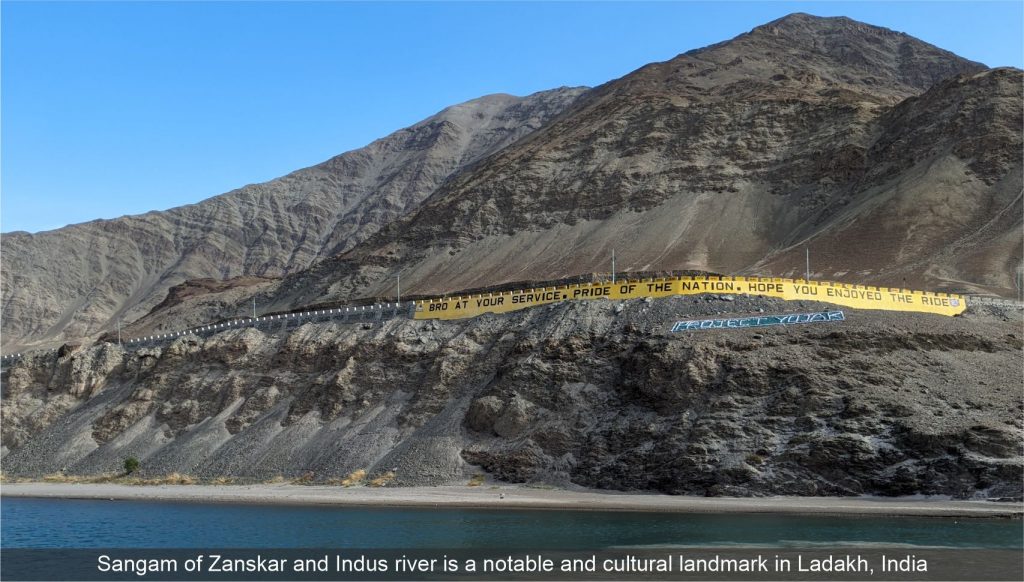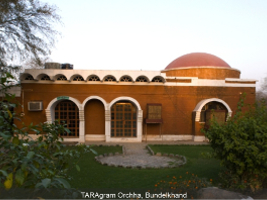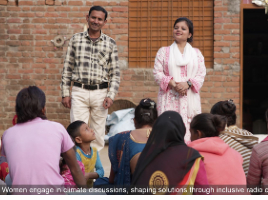The Mighty Himalayas: Mountain, People, Nature, and Climate

The Himalayas, also known as the third pole, is integral to the region’s climate, people, and nature nexus, influencing the lives of millions living here and downstream. However, with the passage of time, climate change is disrupting this intricate balance—impacting glaciers, altering water availability, threatening agriculture and biodiversity, and eroding traditional ways of life.
Erratic weather patterns, including cloud bursts, have increased in frequency in recent years; the one in memory is Kedarnath (June 2013) and most recently in Himachal Pradesh (Mandi, 30 June 2025), leading to massive floods and loss of lives. Furthermore, the loss of glacial mass or retreating glaciers has a direct bearing on long-term water security (affecting perennial rivers, sustaining agriculture, hydropower, and drinking water for millions), exacerbates the frequency of flash floods and glacial lake outburst floods (GLOFs), and intensifies the risks for already vulnerable mountain communities. On the other hand, forest fires have also been supported due to the increasing dry season and availability of combustible materials, such as dry leaves on the forest floors.
Livelihoods, lifestyles, and culture of the people in the Himalayas are closely tied to the season, just as they are in many other regions. However, changing precipitation patterns, rising temperature, and shifts in local biodiversity have significantly weakened livelihood security and eroded cultural continuity. Many local communities, such as the Monpas, Bhutias, and Bhotias, maintain deep cultural connections to their environment—sacred forests, high-altitude lakes, and glacial peaks. Unfortunately, changes in food habits, clothing, livelihoods, and daily routines have occurred almost unnoticed. Crops like apples in Himachal Pradesh and large cardamom in Sikkim are experiencing lower yields and shifts in suitable growing altitudes. This has led to the plantation of new crop varieties, which may or may not be suitable for the local ecosystem. For example, new crops could drain groundwater, fail to bind the soil effectively, and produce leaves that are not ideal for livestock feed. Consequently, livelihoods that have depended on subsistence agriculture, livestock rearing, and forest produce for generations are being destabilised. This instability is pushing young populations to migrate to cities in search of more stable futures.
Addressing these challenges requires a robust science-policy interface that not only provides the latest data but also brings together various stakeholders to develop local solutions, both traditional and innovative. Locally driven adaptation strategies—such as spring rejuvenation efforts, agroecological farming, and eco-tourism initiatives—are emerging in states like Uttarakhand, Sikkim, and Arunachal Pradesh. When indigenous knowledge systems are combined with scientific inputs and community-led governance, they can help build sustainable mountain economies.
This newsletter explores the complex socio-economic, ecological, and cultural factors that connect communities and highlight the need for policy interventions to protect lives and livelihoods. The polycriss of climate change, biodiversity loss, and plastic pollution are leading to livelihood loss and forced migration. Tourism has been a mainstay of the Himalayan communities; however, the influx of visitors over the years has put undue pressure on the ecosystem. This has, in many areas, resulted in the deterioration of essential services (such as water and sanitation), as well as deforestation and land clearing for hotels and parking facilities.
In this issue of the newsletter, Mr Sanjiv Chopra provides a policy overview, emphasising the need for a comprehensive strategy that includes community participation, preparedness for climate-induced disasters, and support for local livelihoods to build resilient communities and ecosystem. Mr Jigmet Thakpa makes a compelling case for a separate policy focused on the Himalayas, advocating for a data-driven approach to ‘Sustainable Himalayan Management’ and calling for the establishment of the ‘Statutory Himalayan Development Authority (HDA)’. The project case stories take us to Leh, where Development Alternatives is collaborating with LAHDC and LEDeG to create better spaces for homestays and develop nearby areas for experiential tourism. In Himachal Pradesh, the team is working closely with local communities to improve access to safe drinking water and its management. The villages in Nalagarh stand as testimonial of innovative models for water security and ecological responsibility, led by women.
For the people of the Himalayas, whose lives are intricately woven with the rhythms of the land and climate, the impacts of changes are no longer hidden. The solutions lie in a blend of tradition knowledge, science, and effective policy!
The views expressed in the article are those of the authors and not necessarily those of Development Alternatives.
This blog first appeared as an editorial in Development Alternatives Newsletter July, 2025
https://devalt.org/newsletter/79-himalayan-ecosystem-%E2%80%93-saving-our-himalayas






Leave a Reply